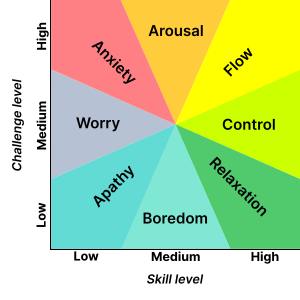Pairs of categorical data
The grades data.frame holds two columns of letter grades, giving pairs of categorical data, like so:
prev grade
1 B+ B+
2 A- A-
3 B+ A-
...
122 B B
This type of data can be summarized by the table function, which counts the occurrence of each possible pair of letter grades. But first, I was never a fan of plus-minus grading, so lets do away with that.
> grades2 <- data.frame( prev=factor(gsub("[+]|-| ", "", as.character(grades$prev)), levels=c('A','B','C','D','F')), grade=factor(gsub("[+]|-| ", "", as.character(grades$grade)), levels=c('A','B','C','D','F')) )
> table(grades2)
grade
prev A B C D F
A 22 6 3 2 0
B 4 15 5 1 3
C 3 2 9 9 7
D 0 1 4 3 1
F 1 2 4 4 11
You might want to compute row (1) or column (2) sums, using margin.table:
> margin.table(table(grades2), 1)
prev
A B C D F
33 28 30 9 22
Of the students who got an A on the first test, what proportion also got an A on the second test? Those types of questions are answered by prop.table().
> options(digits=1)
> prop.table(table(grades2), 1)
grade
prev A B C D F
A 0.67 0.18 0.09 0.06 0.00
B 0.14 0.54 0.18 0.04 0.11
C 0.10 0.07 0.30 0.30 0.23
D 0.00 0.11 0.44 0.33 0.11
F 0.05 0.09 0.18 0.18 0.50
> options(digits=4)
Finally, this type of data can be displayed as a stacked barplot.
m <- t(as.matrix(florida[,2:3]))
m.prop <- prop.table(m, margin=2)
colnames(m.prop) <- florida$County
# fool around with margins and set style of axis labels
# mar=c(bottom, left, top, right)
# las=2 => always perpendicular to the axis
old = par(mar=c(6,4,6,2)+0.1, las=2)
# cex.names => "character expansion" of bar labels
# args.legend => position the legend out of the plot area
barplot(m.prop[,order(m.prop[2,])], legend.text=T, cex.names=0.40, args.legend=list(x=82,y=1.2), main="2000 Election results in Florida", sub='county')
# reset old parameters
par(old)














 R Bloggers
R Bloggers